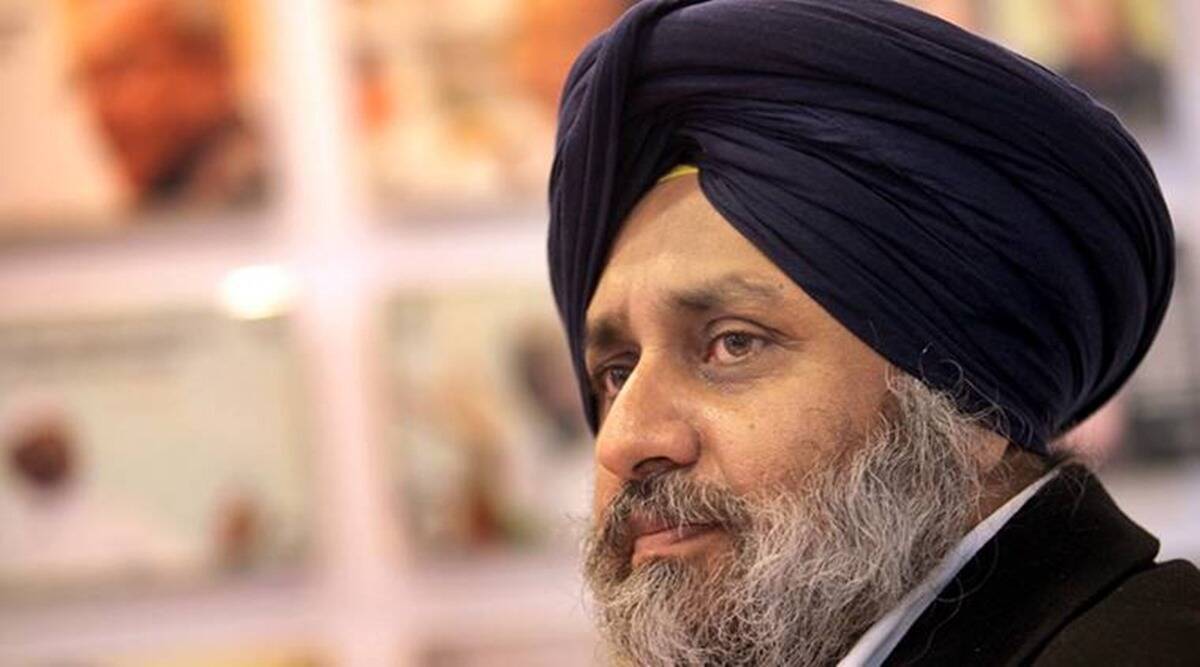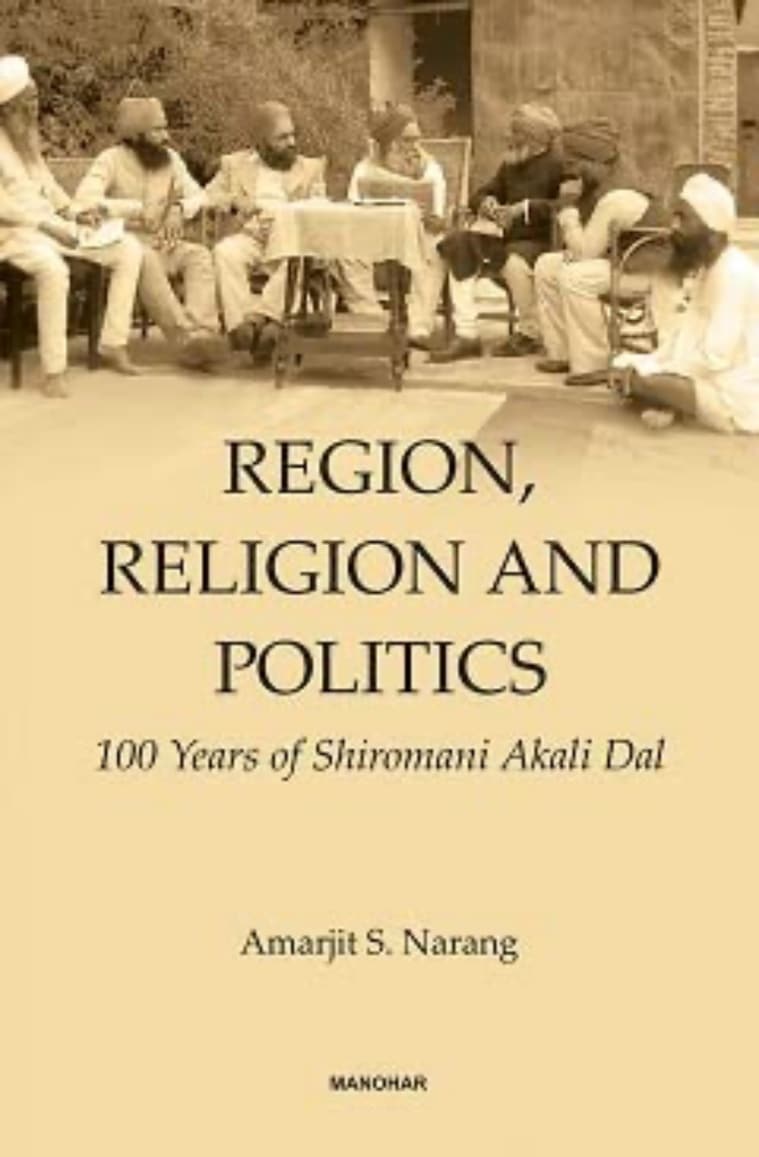 Shiromani Akali Dal (SAD) president Sukhbir Singh Badal. (File)
Shiromani Akali Dal (SAD) president Sukhbir Singh Badal. (File)Reading the synoptic narrative of the hundred years of the chequered political career of the Shiromani Akali Dal in the volume under review makes us aware about the uniqueness of the oldest state level party, which emanated from a religious reformist movement and went on to qualify both as a ‘regionalist’ and an ‘ethnic’ party. As ethnic party, Akali Dal has sought and received considerable political support from the Sikhs in India and even among the diaspora, while taking up the community’s religious, social and political cause as central to the party agenda. As a ‘panthic party’, Akali Dal, since its inception, has claimed to be the ‘sole representative’ of the Sikhs.
Also, like the other two similar ideologically rooted/ cadre-based ‘regionalist’ parties coming out of movement — the National Conference (NC) and the DMK — Akali Dal has also for long pursued cultural and geographical region-specific autonomist politics vis-à-vis the Centre. The party stand has always been based on the adoration of two political deities — communitarian nationalism and Indian nationalism. However, given the significant territorial and demographic changes that happened in Punjab at the time of partition and even after the reorganisation in 1966, the party finds itself often as being ‘trapped at the crossroads of region and religion’.

Despite this limitation, the party has played a significant role in setting the agenda of the politics of Punjab over such a long period. So it is befitting that the author has devoted the first three chapters on not only taking up discussion about the interface of region, religion and politics in a theoretical framework referring to the academic literature but has presented how the three intermingle in the modern Punjab. The fourth chapter onwards the life and times of the Akali Dal, which coincides with the politics of modern Punjab is masterfully narrated with all empirical details and analytical observation.
Founded by Shiromani Gurdwara Prabhandhak Committee (SGPC), a religious congregation of the Sikh community, Akali Dal in its long career has transitioned from spearheading the gurdwara reform movement to the pursuit of ensuring greater political representation of the Sikhs in colonial Punjab.
The party actively participated in the nationalist movement though had an uneasy relationship with the Congress over the representation issue and later over the issue of Sikhs recruitment in the colonial army during the Second World War. Partition brought major demographic change in Punjab as the exodus of the Sikhs from west Punjab led to an increase in the demographic weight of the Sikhs in east Punjab. After the Akali Dal failed to obtain separate communal electorate or reservation of seats for Sikhs in the law making bodies, the party demanded first the adoption of Punjabi in Gurmukhi script as the state official language and then the creation of Punjabi Suba, ostensibly on linguistic basis, but in reality for the Sikh community ‘a territory of their own’.
The party even merged with the Congress before 1957 general elections hoping that the Nehru government would concede the demand. When it did not happen due to the stiff opposition of then Congress Chief Minister Partap Singh Kairon and also the central leadership saw it as communal demand in a borderland state, then the party revived itself and launched the movement again. It was after the 1965 war during which Akalis took nationalist positions, the Sikh majority Punjabi Suba became a reality. However, in the subsequent years devious mechanisation of the Congress took place to weaken the Akali Dal, constant interference of the high command in the state politics including the imposition of president rule dissolving the Akali Dal-Janata Party coalition government in 1980 under the person-centred leadership of Indira Gandhi.
The party’s own inability to draw the bulk Sikh votes was another factor that impelled it to re-launch yet another Dharam Yudh Morcha, this time demanding autonomy for the state vis-à-vis the central state as articulated in the Anandpur Sahib Resolutions, pursuit of strident ethnic politics had disastrous consequences for Punjab, pushing the state under the shadow of Pakistan aided militancy and the ‘moderate’ leadership of the party like Surjit Singh Barnala, Jagdev Singh Talwandi, G S Tohra and Badal, among others, into near oblivion for a decade as militants took over the party.
To its credit, Akali Dal was able to make a comeback to mainstream politics after cessation of militancy, and in the process affected a shift in the party’s hitherto strident ethnic agenda to the agenda for communal peace and development. The ‘mainstreaming’ of the party has also been due to the electoral compulsion of the party to enter into strategic alliances with the BJP, looking for increasing its vote to counter the Congress which has always had a decent support base across the regional and religious divides. The opportunity to share power at the Centre in the coalition government and receiving grants from it were additional factors.
The leadership skill of Parkash Singh Badal was instrumental in bringing an end to factionalism within the party. His popularity and leadership skill catapulted the party into position of power winning a ‘normal’ election on its own in 1997, though it inducted the BJP as its ally into the government. The party also won 2007 and 2012 assembly elections under his leadership. However, the period also saw the marginalisation of the other two pillars of the Sikh politics, namely the SGPC and the Akal Takht and ideological and organisational degeneration of the party into ‘family party’. The Badal family now dominated the party and its government. The reckless competitive populism and lack of effective governance marked the Akali Dal led three coalition governments. Much of what has gone wrong in recent Punjab like drugs, mafia stranglehold, institutionalised corruption, politicisation of the state machinery — all have been mainly attributed to the Akali regime in the public perception despite the party denial.
As of now the Akali Dal finds itself at the crossroads facing existential crisis which can be attributed to the following factors: first is the generational transition which has seen the leadership shifting to Sukhbir Badal and other younger leaders, almost all from political families belonging to landed Jat Sikh community. The new generation dynasts have not been able to imbibe the Akali tradition of sacrifice and service to the panth and are viewed as being ready to make anti-panthic compromises like hobnobbing with deras or failing to take corrective action on the sacrilege issue involving the Sikh Holy Scripture. In the process the party has failed to retain its core social constituency.
The book is most helpful for those who want to study the politics of Punjab from the vantage point of Akali Dal. The inclusion of rare photographs depicting Akali stalwarts and activists enrich the quality of the work. It would have helped if an attempt had been made to locate the study in the broader framework of rise and growth of regional parties across India.
Ashutosh Kumar is Lala Lajpat Rai Chair Professor at Panjab University, Chandigarh